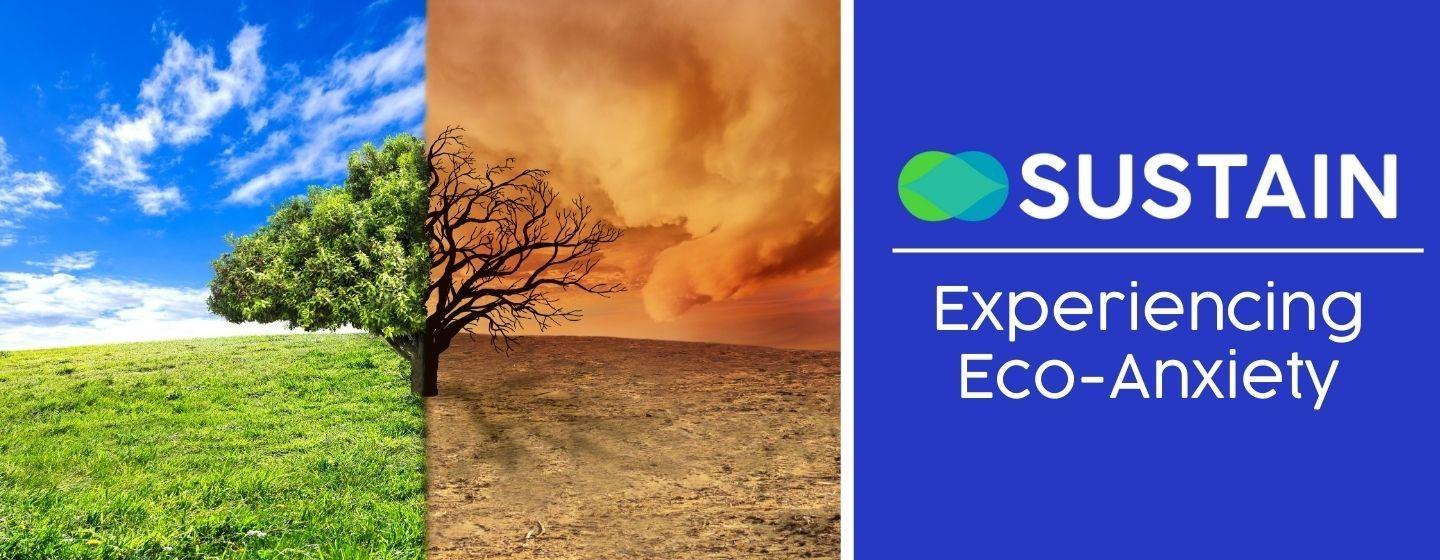Experiencing Eco-Anxiety



You may have experienced the shock and alarm of wading into a steamy Gulf this summer, as Florida’s ocean temperatures hit triple digits during Earth’s hottest month on record. Perhaps you feel mounting loss with each news report about coral bleaching or another endangered panther killed on Florida roads. Maybe anger overtakes you at the sight of algae-ridden waters where there were once shimmering schools of fish and lush seagrass meadows.
A sense of fear and powerlessness may churn inside your gut when you imagine a more perilous, unpredictable planet for your children.
There’s a name for these feelings: eco-anxiety.
Researchers say eco-anxiety is a normal reaction to the swift environmental changes around us and those yet to come. Recognizing the validity of these emotions is a first step to learning how to live with them and use them to generate meaningful action, individually and together.
Eco-anxiety is an emerging concept, but it’s not a new phenomenon: In his 1949 book “Sand County Almanac,” ecologist and conservationist Aldo Leopold described feeling “alone in a world of wounds.”
Researchers are still in the early stages of understanding the toll that climate change and our current environmental crisis takes on our mental health. They also have yet to agree on a precise definition of eco-anxiety. The American Psychological Association has defined eco-anxiety as the “chronic fear of environmental doom,” while Australian philosopher Glenn Albrecht describes it as a sense that the ecological foundations of existence are collapsing.
Eco-anxiety encompasses a complex range of emotions people experience in response to environmental loss and change. Climate anxiety is the distress people experience when contemplating a future shaped by human-caused climate change. Solastalgia is a feeling of homesickness while still at home – the result of rapid, dramatic changes to one’s surroundings. Eco-grief is the lament for experienced and anticipated losses in the natural world.
Signs of eco-anxiety can include anxiety, sadness, fear, dread, anger, anguish and even depression and despair. Eco-anxiety can cause panic attacks, obsessive thinking, irritability, weakness, sleeplessness and mood swings. Some people are wracked with guilt over humans’ role in environmental decline. Others experience anger and frustration at the lack of urgent action, while still others become paralyzed by hopelessness or burnout.
Anyone can experience eco-anxiety, but Indigenous people, children and youth and those closely connected to the natural world may be the most vulnerable.
A 2021 survey of more than 10,000 young people from 10 countries found that 59% were very or extremely worried about climate change, 75% think the future is frightening and 83% think people have failed to take care of the planet. Nearly half said their anxiety about the planet’s future affects their ability to function on a daily basis. Many also feel betrayed by their governments, which they perceive as failing to take climate action seriously enough.
Some experts also critique using terms like “climate anxiety” to focus on future concerns such as species extinction, while marginalized communities experience ongoing violence and exploitation. Racial and ethnic minorities, as well as low-income communities, not only face greater environmental threats, they often see social disparities, such as the lack of nutritious food or health care, as being environmental issues.
Anxiety is a normal response to a threat. It alerts us to danger and can even be practical and constructive, propelling us into information-seeking, problem-solving mode.
Climate change is a very real threat to our planet and our wellbeing, with Earth on track to suffer multiple climate hazards over the next two decades. Florida is already experiencing the effects of an atmosphere overheated with fossil fuels, including extreme heat, stronger hurricanes, rising seas. Locally, pollutants are supercharging red tides and other algae blooms, and development is shrinking the habitat Florida wildlife needs to flourish.
While feelings of distress, sadness and alarm aren’t pleasant, they are a rational response to these phenomena. We’re also more prone to feeling anxiety when faced with threats that are uncertain, unpredictable and uncontrollable.
The challenge for mental health professionals is to alleviate paralyzing forms of eco-anxiety and help people process these feelings in a way that unlocks their capacity to act and adapt, writesresearcher Panu Pihkala.
Mental health professionals are still developing practices for helping people deal with eco-anxiety, and this process can look different for each person. Common first steps, however, include acknowledging what you’re experiencing and finding safe spaces to talk about how you feel. Silence, denialism and isolation can intensify anxiety.
Brittany Rivers, a climate-trained therapist in Gainesville, said the goal should be to manage eco-anxiety in a way that allows you to live sustainably and meaningfully. Provide space for grief: Grieving helps us accept what has been lost and creates space for new opportunities, Rivers said.
The Good Grief Network offers a 10-step program for groups to process their eco-anxiety together. The final step is to reinvest in meaningful action. Getting involved in community efforts that align with your values and skill set is a constructive way of harnessing your eco-anxiety.
Seeking solace in nature can also yield a host of physical and mental health benefits – but be careful not to approach nature looking to extract a positive feeling, Rivers advised. “The deeper work of eco-anxiety is rebuilding a relationship with nature that honors its inherent value,” they said.
Researchers disagree on whether or not hope should be the end goal. In “A Field Guide to Climate Anxiety,” Sarah Jaquette Ray advocates for hope accompanied by “a radical imagination about the future we desire.”
Another approach comes from ecophilosopher Joanna Macy – active hope or “a radical hope that holds steady to the belief that what we can do today is necessary even though we may not know how, when or to whom it will matter.”
Did you learn something new? Please take a moment to answer this short survey.